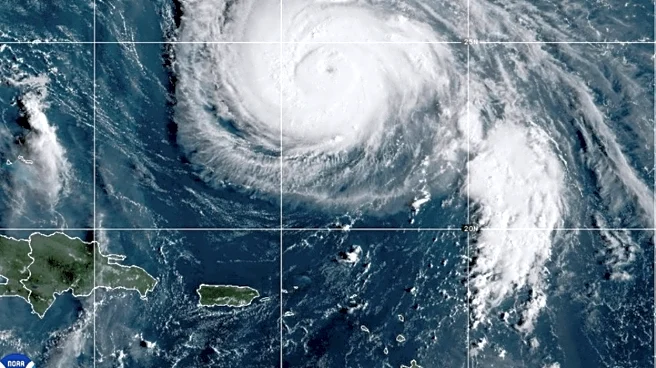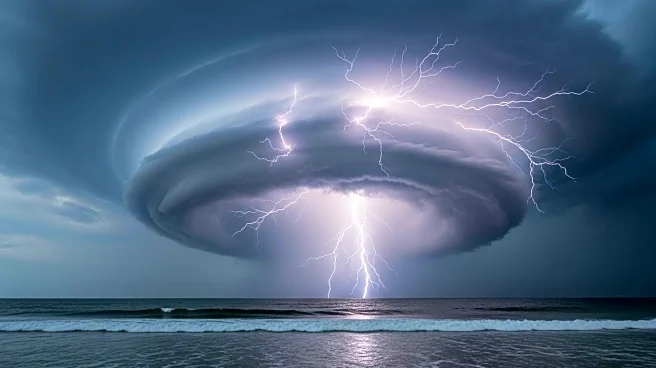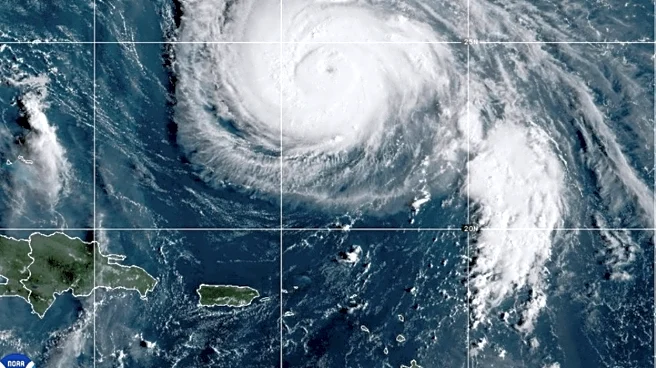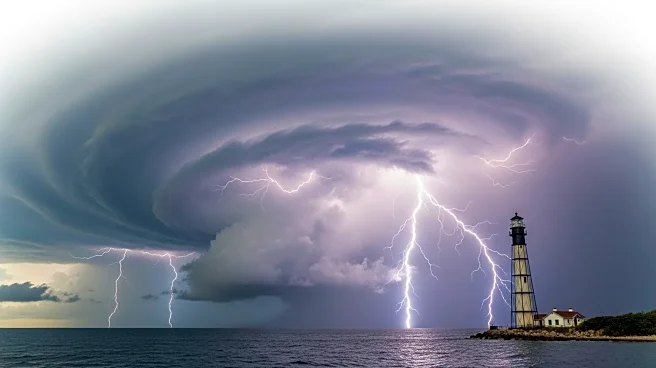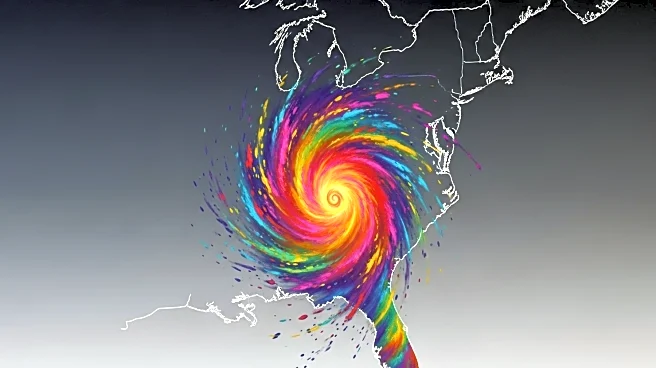What is the story about?
What's Happening?
Tropical Storm Imelda is currently affecting the northwestern Bahamas with significant wind and rain as it moves northward. The National Hurricane Center reported sustained winds of 48 mph and gusts up to 83 mph in the Bahamas. Imelda is centered about 240 miles east-southeast of Cape Canaveral, Florida, and is moving north at 7 mph with top sustained winds of 60 mph. The storm is expected to continue organizing, with conditions favorable for development, including warm ocean temperatures and moderate wind shear. Imelda is forecasted to peak as a Category 2 hurricane near Bermuda by Wednesday, potentially leading to a Tropical Storm Watch for the island.
Why It's Important?
The progression of Tropical Storm Imelda is significant as it poses potential threats to Bermuda and could influence weather patterns along the U.S. Southeast coast. While the heaviest rains are expected to miss the U.S. coast, Bermuda may experience severe weather conditions, including heavy rain and strong winds. The development of Imelda into a Category 2 hurricane could lead to a 'sting jet,' causing destructive winds. This situation highlights the importance of monitoring tropical storms for potential impacts on coastal regions and the necessity for preparedness in affected areas.
What's Next?
Imelda is expected to continue its northward trajectory, influenced by Hurricane Humberto, which will steer it east-northeast. As Imelda approaches Bermuda, a Tropical Storm Watch may be issued, and the storm could transition into a powerful extratropical storm. The National Hurricane Center will continue to monitor Imelda's path and intensity, providing updates and forecasts to ensure preparedness in potentially affected regions.
Beyond the Headlines
The development and trajectory of Tropical Storm Imelda underscore the complexities of forecasting tropical storms and the potential for significant forecast errors. The National Hurricane Center's five-day forecast error for Imelda has been notably higher than average, illustrating the challenges in predicting storm paths and intensities. This situation emphasizes the need for advanced modeling techniques and continuous improvements in meteorological forecasting.
AI Generated Content
Do you find this article useful?






